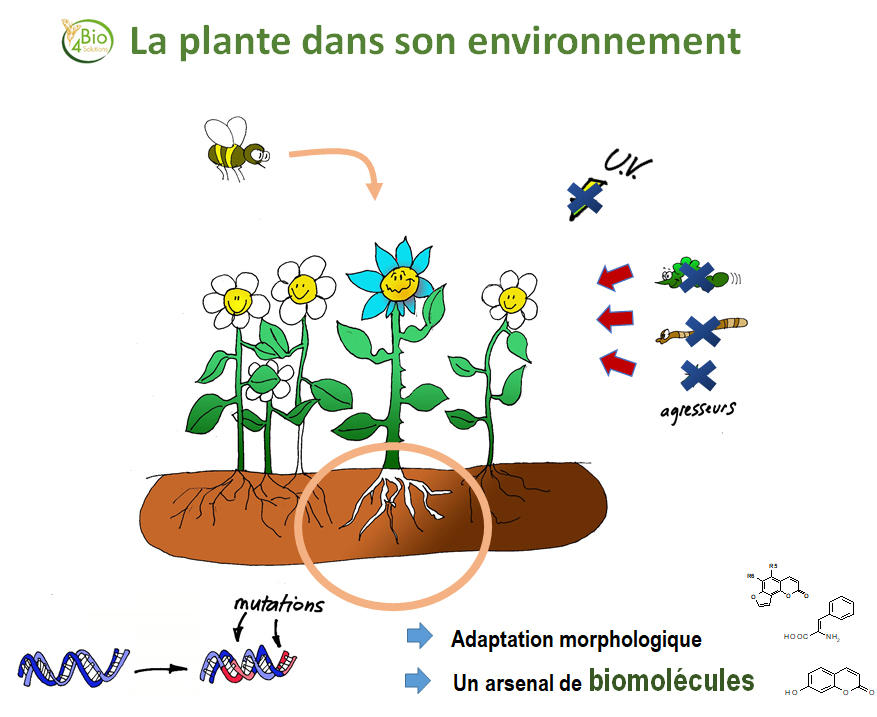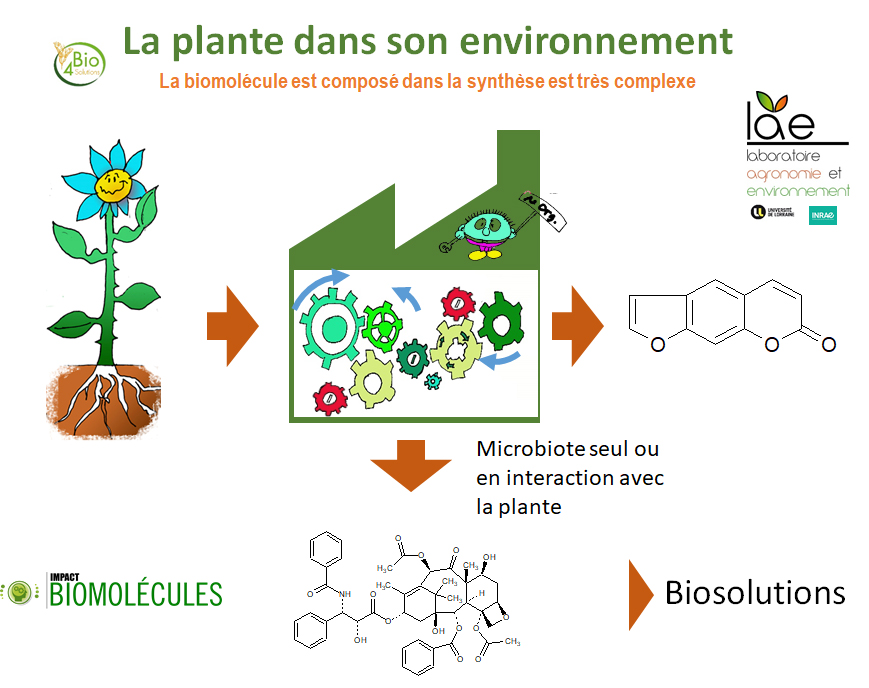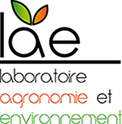The origin of the chair: the study of the specialized metabolism of plants. Plants are organisms that cannot move. These plants are however subject to a great number of stresses. These stresses are of biotic origin, that is to say predators, insects, microorganisms. Or of abiotic origin such as for example UV radiation. To protect themselves, plants have evolved over millions of years. As mutations have taken place, they have acquired new properties. They changed from a morphological point of view by becoming more robust or even larger. They also acquired the ability to synthesize a whole arsenal of molecules specific to each plant. These molecules can be simple or complex.
- They can have a toxic effect on attackers.
- They can act as a filter vis-à-vis UV radiation.
- They are involved in the attraction of pollinators.
- They can also spread at the root level, prevent the growth of nearby plants or even affect the telluric microbiota.

For 20 years, we have been trying to understand through my research activities at LAE how these plants work which can be considered as real factories for the production of biomolecules In other words it comes down to trying to understand how the different gears of this complex machine make to turn in the right direction. More precisely, there are in all plants basic molecules which are similar. Plant species then acquired or developed a number of genes that allow the production of enzymes capable of cascading this initial substrate into the final product of interest.
I-SITE LUE and IMPACT Biomolecules project
Since 2017, we have initiated a new project thanks to the support of the I-SITE Lorraine University of Excellence and in particular thanks to the IMPACT Biomolecules project. In this project we considered the plant to be a more complex ecosystem with a whole population of microorganisms, which was described in the scientific literature for a number of plants. The first results that we have obtained so far, confirm this and show that there is indeed a microbiota hosted in the plant which is capable of producing or participating in the production of new molecules.
All this led us to consider using these microorganisms or these interactions between the plant and the microorganisms as a tool to be implemented in the context of biosolutions (biocontrol, biofertilization and biostimulation).

From laboratory to field
It was then necessary to find a way to apply this idea on a field scale. Laboratory conditions are often very far from reality, which has led us to reflect on the notion of ecological transition and the notion of production system, which is a subject that preoccupies many researchers at LAE. Simply put, there are basically 2 types of production systems. A specialized production system in which there is very little diversity and which is essentially based on the use of synthetic chemical inputs. A conservative production system based on the exploitation of ecosystem services. In simple terms, this system amounts to exploiting the natural interactions that there can be in biodiversity.
The bio4solution chair aims to position itself between these two extremes to identify and use inputs of biological origin, biosolutions, for example through biological control method, pollination, supply of nutrients.
Who are these players ?
Academics (Alain Hehn, Sophie Slezack, Séverine Piutti) and industry players (BASF agro, PAT, Agrauxine, LORCA)


